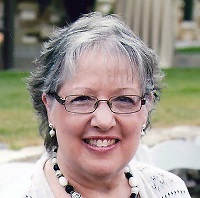

by Aleta Samford
Synopsis: If the lesson is in our minds and our hearts, the best words and visuals will become obvious.
If you have thoroughly studied the Bible text for your lesson, and if you have referred to the dictionary for simpler ways to define the more difficult words of the Scriptures, then you are well on your way to speaking the language of your class and making God's word clear. You will satisfy the natural yearning of your students to learn, instead of frustrating them with material that does not make sense.
But are words the only way we communicate? What about the bulletin-boards and walls of our classrooms? Do we take the time to consider the language of the visuals that are displayed, or do we thoughtlessly rely on whatever we can find, so long as the walls aren't bare? Would an observer think they had stepped into a class for secular, rather than spiritual, learning? What do our walls speak to our students?
There are many books available that are full of ideas on how to prepare a Bible classroom. One idea fixed in my mind was the suggestion to decorate with the theme of a Three-Ring Cir-cus. We adults have learned to see the figurative in certain illustrations, but I could not see the relevance of this one. It was cute and colorful and catchy to the eye, but it was confusing and dis-tracted my thoughts from any lesson found in God's word.
Keep in mind that children are very literal and need exact visuals to provide pictures behind the words and the messages we want them to absorb. Idea books are just that, ideas. Visuals should be selected after a deliberate study of the Bible text, not before. In other words, do not start the teaching process by flipping through idea books and blindly choosing something cute and colorful. Take the time to get the theme for the quarter and the lesson's goals in your own mind. Let the fruits of your studies produce ideas that will, word for word and visual for visual, train your students' perceptions of our Almighty Creator and Lord.
This next suggestion is purely subjective, but please consider my thoughts on bringing the fantasy world of decorations into the classroom. I am referring to such things as talking animals that might be used to tell a rule or to illustrate the Bible story itself. It is fantasy for an animal to talk (unless it is a miraculous talking donkey!) and that's okay in the imaginary and secular world, but our goals are different from pleasurable reading or secular schooling. Our goals are to teach about sin and accountability. We do not want to leave our children at the stage of thinking that Bible stories are filled with fantasy, clouding their view of a God who has real expectations of them. Let's not hinder them from coming to Christ and the Heavenly Father by confusing the language we have worked so hard to prepare.
I say this to stress a better choice. It is the tiny, fundamental things that matter in establish-ing authority and laying the proper foundations. Ponder how God aided our longing to grasp His awesomeness and His great love through the visuals of creation, "In the beginning, God cre-ated the heavens and the earth" (Gen. 1:1), and His Son, Jesus Christ, "If you have seen me, you have seen the Father" (John 14:9).
The Old Testament is brimming with visuals of God's mighty works. Get out that timeline. Wear it out. Illustrate with threads of visuals that weave God's redeeming plan from Genesis to the coming of Christ. Accentuate the visual that is Christ. Use pictures that not only tell the story but are the story.
The Law of the Language helps us set the parameters to communicate our spir-itual heritage, word by word, visual by visual. "The language used in teaching must be common to teacher and learner." God's principle brings it home: "Therefore, if I do not know the meaning of the language, I shall be a foreigner to him who speaks, and he who speaks will be a foreigner to me" (1 Cor. 14:11).
Author Bio: Aleta is the wife of Gene Samford who preaches for the church that meets in Kemp, TX. She has taught Bible classes for 42 years and, to help other women join the ranks, presents a series of lessons based on God's word, The Seven Laws of Teaching, and her own experiences. She may be reached at aletas10@sbcglobal.net.
